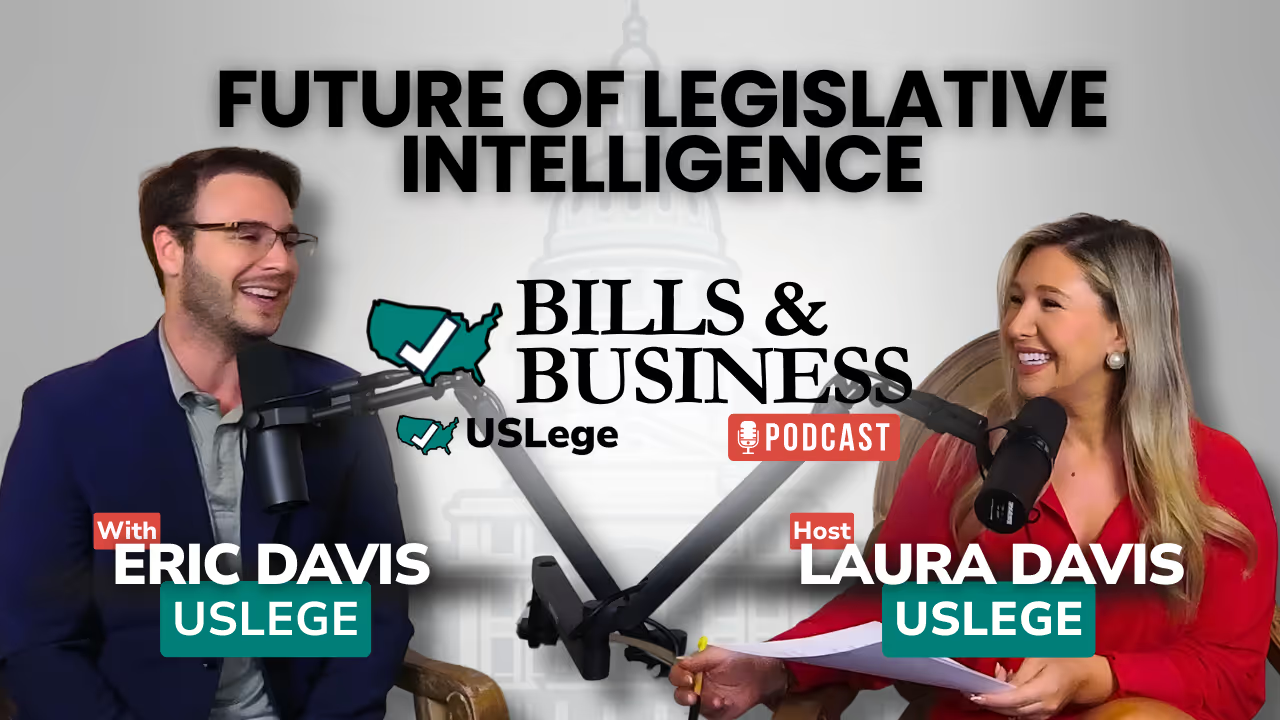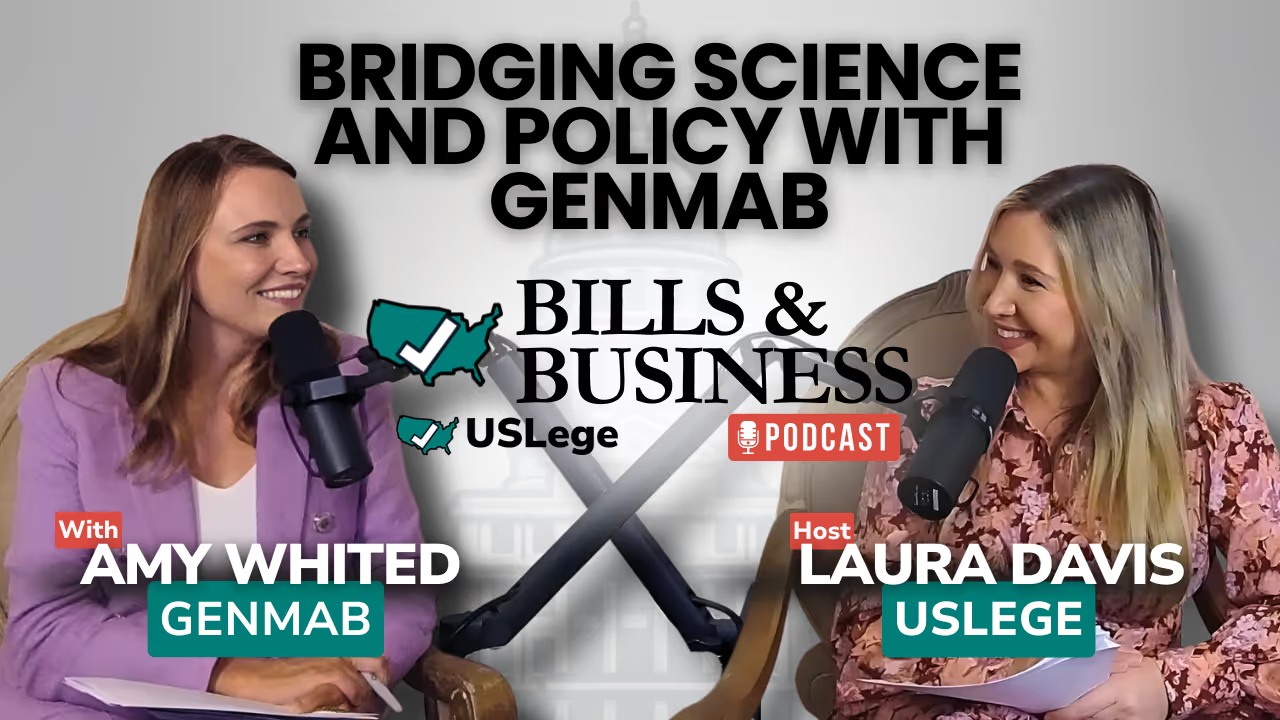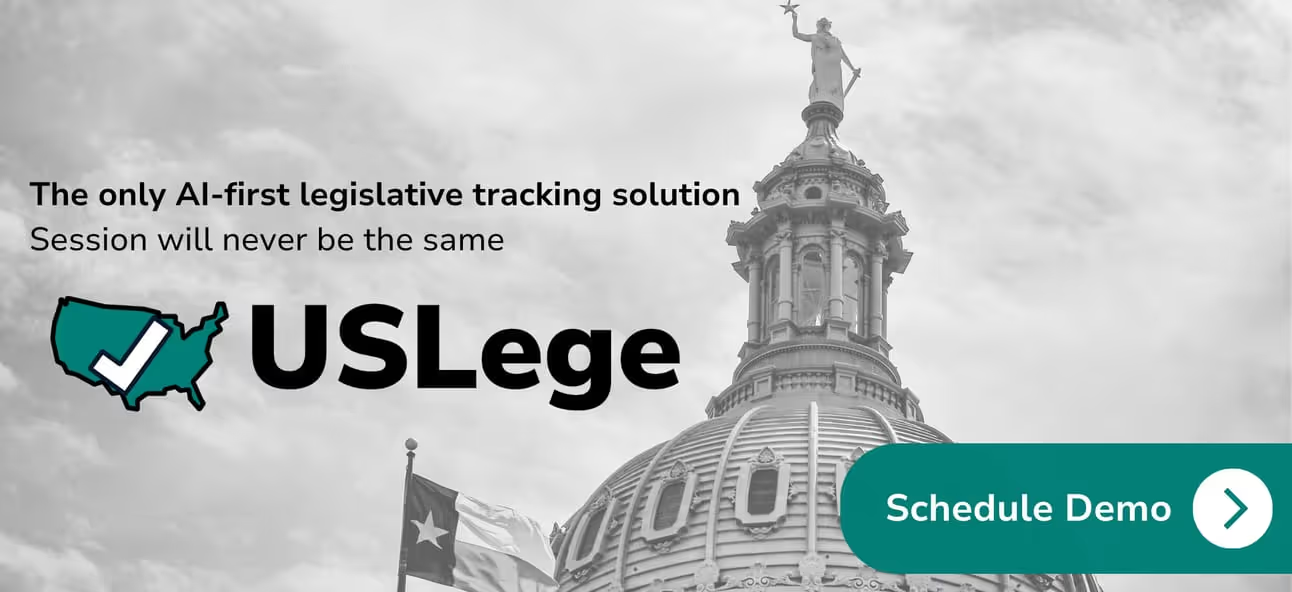
Welcome back, friends
As we enter the new year, Texas’ ports are more crucial than ever to the state's economy, representing roughly 28% of Texas’ GDP. A recent report highlights their role in job creation and general activity. Meanwhile, the state is actively responding to severe storms in Southeast Texas, deploying over 300 responders to assist with recovery efforts, as residents prepare for another potential cold front.
Today’s Insights:
- Texas Ports Continue to Propel the State’s Economy
- Texas Mobilizes Resources to Tackle Storm Aftermath
Texas Ports Continue to Propel the State’s Economy
Texas Ports are a major player in powering the state's economy, contributing over $713.9 billion in economic activity—28% of Texas’ GDP. A recent study by the Texas Ports Association highlights how these ports are not just hubs for shipping, but key drivers of economic growth and job creation across the state. Economic value surged from $449.6 billion in 2018 to $713.9 billion, showcasing the extensive impact of port operations on Texas’ economy and households across all 254 counties.
Job growth has been accompanied by an increase in the average annual salary of port workers from $67,611 to $81,845, and port activity now supports $17.1 billion in state and local tax revenue. Additionally, Texas Ports demonstrate an impressive return on investment, yielding $53.46 for every $1 invested, highlighting their efficiency as economic multipliers. Cruise passenger and marina activities further diversify the ports' economic contributions, generating thousands of jobs, $1 billion in business revenue, and over $26.6 million in taxes in 2023. Despite these achievements, leaders like Kent Britton, CEO of Port of Corpus Christi, emphasize the need for strategic capital investments to maintain Texas Ports' competitive edge against global infrastructure advancements.
“There is an incredible return on investment for all of Texas. Port growth does not happen in a vacuum; we understand that we impact the lives of all Texans and the nation. We also are aware of the challenges we face where other states and nations are making massive investments in port infrastructure. For Texas and Texas ports to remain strong, strategic capital investments are needed”
- Kent Britton, CEO of Port of Corpus Christi
Source: The Economic Impacts of the Texas Ports in the State of Texas
Texas Mobilizes Resources to Tackle Storm Aftermath
Lt. Governor Dan Patrick provided an update today on the state’s response to the severe weather that hit Southeast Texas, causing widespread damage. The storm, which brought flash flooding, large hail, and tornadoes, resulted in one confirmed fatality and several injuries. In response, the state deployed over 300 responders and more than 180 assets, including search and rescue personnel, boat squads with rescue swimmers, and roadway safety equipment. Resources will remain on standby to assist local officials as needed, and volunteer organizations have also mobilized to help communities in need.
Patrick emphasized that Texas state agencies are working diligently to assess the damage and provide support, with initial damage assessments already underway.
“There are some localized, provider-related power outages. State officials are working to ensure electrical providers restore power to all impacted Texans as quickly as possible.”
“Texas state agencies are working hard to help their fellow Texans and have begun to assess the damage.”
- Lt. Gov. Dan Patrick
This event and response come just a week before meteorologists warn of another potential arctic blast hitting Texas. While the cold front is expected to impact the entire state, the National Weather Service predicts an 80% to 90% chance of well below-average temperatures in East Texas. As communities continue to recover, they may face additional challenges in the coming days. Officials are urging residents to prepare for the cold and stay informed on weather updates.
We hope you enjoyed today’s read!
🎙️We Have a Podcast! 🎙️
Bills and Business is your go-to podcast for conversations related to Texas legislation and business. Hosted by Laura Carr, Co-Founder of USLege—an AI-driven legislative tracking software—we bring you in-depth analysis on economic trends, impactful legislation, and key developments shaping Texas business.
Subscribe on Youtube and Spotify for weekly episodes!

- 01 First
Subscribe to our Newsletter

Read more news

How to Choose the Best Legislative Tracking Software for Your Organization
In today’s fast-paced policy environment, staying informed is a constant challenge. Bills, hearings, and regulatory updates move quickly across jurisdictions, creating risks for organizations that rely on timely information, including the risk of missing important information when relying on manual processes. Choosing the best legislative tracking software is one of the most effective ways to manage legislative and regulatory tracking efficiently, minimize missed opportunities, and strengthen decision-making.
This article walks you through how to evaluate legislative and regulatory tools, compare coverage and capabilities, and understand which features help government affairs professionals and public affairs teams stay informed and a step ahead of rapid change. You’ll learn how to assess software platforms, review vendor performance, and apply a clear framework to guide your organization’s choice.
If you’re exploring modern solutions for policy monitoring, visit the best legislative tracking software to see how advanced systems help professionals track activity and analyze critical information across multiple jurisdictions.
Why Legislative Tracking Software Matters
Every legislative session brings thousands of new bills and hearings across the federal government, state legislatures, and local governments. For government affairs teams and law firms that must monitor state legislation or track regulations, the pace of change can be overwhelming.
Without digital platforms, staff may spend hours each day manually searching databases, reading committee reports, and updating spreadsheets. That process isn’t just inefficient—it’s risky. Missing one act or amendment could affect compliance, advocacy strategy, or even public reputation. Relying on manual tracking increases the chance of overlooking important details in legislative information, which can lead to missing critical updates or changes.
The Challenge of Volume and Velocity
- Legislative and regulatory tracking spans bills, hearings, amendments, and regulations that appear daily.
- Strategic decisions depend on access to verified data and real-time alerts.
- Regulatory developments from government agencies can impact clients and advocacy groups instantly.
The Payoff
Automated tracking saves time, reduces human error, and delivers actionable insights faster. Teams can filter results, share updates, and focus their attention where it matters most—on influencing policy and shaping outcomes.
Key Features and Capabilities to Look For
Choosing the right tracking platform starts with understanding what differentiates effective tools from simple alert systems. Below are core features to evaluate before purchasing or implementing any solution.
Coverage Across Jurisdictions
The best systems provide a broad jurisdictional reach—from federal legislation to state legislative hearings and local government acts. Before committing, confirm whether the platform includes:
- Federal and state legislation: Bills, amendments, regulations, hearings, and newly introduced bills, with Congress as a key source for federal legislative tracking.
- Regulatory activity: Notices from agencies and committees.
- Comprehensive data sources: Congressional records, local archives, and state portals.
Understanding the dynamic nature of Capitol Hill is crucial, as legislative activity and staff turnover at the federal level can significantly impact advocacy strategies and tracking efforts.
If your team must monitor state legislation, check that the vendor’s coverage includes smaller states and municipalities that frequently pass niche regulations.
Real Time Alerts and Notifications
Fast updates are critical for professionals who manage compliance or advocacy campaigns. Strong systems offer:
- Instant email alerts for bill introductions, amendments, or new hearings.
- Custom filters for topics, sponsors, committees, or jurisdictions.
- Real-time dashboards showing where legislation is moving next.
- Collaboration tools so teams can assign follow-up actions or comments.
With real-time alerts, government affairs professionals and policy experts can respond before deadlines pass—ensuring that organizations stay ahead and fully informed.
Analytics, Reporting, and Insight Generation
Good tracking isn’t just about collecting raw data. It’s about turning that data into useful analysis. A well-built platform helps users:
- Create trend dashboards showing activity by topic, legislator, or region.
- Generate reports to brief clients, executives, or advocacy groups.
- Use artificial intelligence to compare bills, predict movement, or analyze outcomes.
- Access historical data for longitudinal analysis.
By combining analytics with visualization tools, organizations gain the context needed to make strategic decisions quickly.
Artificial Intelligence in Legislative Tracking
Artificial intelligence transforms how government affairs professionals and government relations teams approach legislative tracking. By harnessing AI, organizations can analyze massive volumes of legislative and regulatory data in real time, ensuring that no critical bill or regulation goes unnoticed. AI-powered tools can automatically identify and prioritize bills that align with an organization’s advocacy goals, generate personalized bill summaries, and even predict the likelihood of legislative movement—all with minimal manual intervention.
For government relations professionals, this means less time spent sifting through raw data and more time focusing on strategy, stakeholder engagement, and influencing policy outcomes. AI-driven platforms can scan every legislative chamber, flagging new bills and regulations that matter most to your organization. These actionable insights empower teams to stay ahead of policy developments, respond quickly to emerging issues, and confidently make strategic decisions. As artificial intelligence continues to evolve, it will play an increasingly vital role in helping professionals track legislation, analyze regulatory trends, and drive effective advocacy across all levels of government.
Ease of Use and Vendor Support
Complex systems often fail because users find them hard to operate. When evaluating tracking software, consider:
- Intuitive search functions and clear navigation.
- Vendor training, documentation, and help-desk responsiveness.
- Implementation timelines and onboarding resources.
- Integration options with CRM, compliance, or reporting platforms.
The easier the interface, the more likely professionals across departments—legal, advocacy, and communications—will actually use it.
Security and Data Protection
When it comes to legislative tracking, security and data protection are non-negotiable for government affairs professionals and organizations. The sensitive nature of legislative and regulatory data—combined with the need for accurate, up-to-date information—means that robust security measures are essential. Leading legislative tracking platforms employ advanced encryption, secure servers, and strict access controls to ensure that only authorized users can access critical information.
In addition, reputable platforms adhere to industry best practices and compliance standards, safeguarding client data from unauthorized access or breaches. This commitment to security allows government relations professionals to focus on their core strategy and advocacy efforts, knowing that their data is protected at every step. By selecting a platform with proven security protocols, organizations can confidently manage their legislative tracking activities and maintain the trust of stakeholders, clients, and team members.
Integration with Other Tools
For government affairs professionals, efficiency and collaboration are key to successful advocacy. That’s why seamless integration between legislative tracking platforms and other essential tools—such as CRM systems, email clients, and social media monitoring software—is so valuable. Integrated platforms enable government relations professionals to track bills, monitor legislator interactions, and analyze advocacy campaigns all in one place, reducing manual data entry and streamlining workflows.
By connecting legislative tracking with CRM systems, organizations can maintain a comprehensive record of stakeholder engagement, track the progress of key bills, and measure the impact of their advocacy efforts. Integration with communication tools also ensures that teams can quickly share updates, assign tasks, and coordinate responses to legislative developments. Ultimately, these integrations help government affairs teams stay ahead of policy changes, maximize efficiency, and deliver more effective results for their organizations and clients.
Cost, Scalability, and ROI
Pricing varies widely across platforms. Some charge by user, others by jurisdiction. Evaluate:
- Scalability: Can you expand access as new teams join?
- Hidden costs: Extra fees for integrations or data exports.
- ROI: Measure efficiency gains, reduced research hours, and improved regulatory compliance.
The right investment pays for itself through faster tracking, stronger insight, and better policy outcomes.
Building Your Decision-Making Checklist
A structured checklist helps teams evaluate multiple vendors objectively. Consider the following steps:
- Define scope: Identify which government levels—federal, state, local—your organization must monitor.
- Map stakeholders: Determine which departments, clients, professionals, or legislators need access to legislative tracking information.
- Create a scoring system: Rate vendors on coverage, alerts, analytics, ease of use, and cost.
- Request demos: Ask vendors to show how their tools track legislation and deliver reports.
- Review accuracy: Compare automated alerts to official legislative portals to confirm reliability.
- Pilot the system: Run a short test during a legislative session to evaluate performance.
This structured review allows government relations professionals and policy experts to make choices based on measurable evidence, not sales claims.
Common Pitfalls and How to Avoid Them
Even sophisticated organizations can stumble during implementation. Watch for these frequent errors:
- Assuming full coverage: Some systems exclude local governments or agency regulations. This can result in missing important government actions, leaving you unaware of key legislative or regulatory developments.
- Overloading users: Too many irrelevant alerts lead to fatigue.
- Ignoring integration: Platforms that don’t connect to existing tools reduce efficiency.
- Underestimating training: Teams may resist new systems without clear onboarding.
- Skipping metrics: Without KPIs, you can’t analyze ROI or improvement.
Avoiding these issues keeps your strategy grounded in real performance data.
Implementation Best Practices and Maximizing Value
Rolling out a new tracking platform works best when everyone understands the process. Follow these steps:
- Stakeholder alignment: Engage government affairs, legal, and communications teams early.
- Define taxonomy: Standardize issue tags, committees, and jurisdiction names.
- Workflow mapping: Assign ownership for monitoring, escalation, and communication.
- Training: Offer live sessions and short guides to reinforce adoption.
- Continuous review: Revisit settings each quarter to refine alerts and search filters.
As policy cycles shift, ongoing optimization ensures that your system remains accurate, relevant, and responsive to regulatory developments.
For additional insight on how legislative and regulatory tools operate, review the NCSL’s bill tracking overview, which explains how professionals track state legislation effectively.
Future of Legislative Tracking
The future of legislative tracking is bright, with rapid advancements in artificial intelligence, machine learning, and data analytics reshaping how government affairs professionals and organizations monitor and influence policy. As the demand for real-time, data-driven insights grows, legislative tracking tools will become even more sophisticated—offering predictive analytics, automated reporting, and deeper integration with other advocacy platforms.
We can expect to see greater adoption of cloud-based solutions, enhanced security features, and more intuitive user interfaces that make it easier for government relations professionals to access and analyze critical information. The integration of legislative tracking with CRM, communication, and analytics tools will provide a unified view of advocacy efforts, enabling teams to coordinate strategy and engage stakeholders more effectively.
As the policy landscape evolves, staying ahead of legislative and regulatory developments will be essential for organizations seeking to influence legislation and achieve their advocacy goals. By embracing the latest technologies and innovations, government affairs professionals can ensure they remain agile, informed, and ready to drive meaningful impact in an ever-changing environment.

#41 - Eric Davis: The Future of Legislative Intelligence
Welcome to Episode #41 of Bills & Business. In this episode, Laura Carr, Co-Founder of USLege, sits down with Eric Davis, Co-Founder and CEO of USLege, for a behind-the-scenes look at how the company went from an idea in an Austin apartment to a fast-growing leader in legislative intelligence.
Eric shares the real story of building USLege from the ground up: the early bootstrapping days, customer research that validated the vision, and the turning points that led to securing investors like Reformation Ventures and Avalanche Ventures. Together, Laura and Eric discuss what it takes to build a Texas tech startup that is transforming how policy professionals work, communicate, and make impact.
They also dive into the next chapter for USLege, from AI-driven workflows to the future of legislative data and the evolving relationship between technology and government.
Don’t forget to subscribe to Bills & Business on Apple Podcasts, Spotify, and YouTube for more deep dives into Texas policy and business news.
📲 Follow Laura Carr
🐦 Twitter: @Laura_USLege https://x.com/Laura_USLege
💼 LinkedIn: https://www.linkedin.com/in/laurauslege/
📸 Instagram: https://www.instagram.com/thereallauracarr/
🛍️ ShopMy: https://shopmy.us/shop/lauraluise?Section_title=latest-finds&tab=collections
✍️ Substack: https://lauraluise.substack.com/
🔗 Links: https://lauraluise.carrd.co/
📲 Follow USLege
✨ Instagram: https://www.instagram.com/uslege.ai/
📘 Facebook: https://www.facebook.com/USLegeai
🐦 Twitter: @USLege_ai https://x.com/USLege_ai
💼 LinkedIn: https://www.linkedin.com/company/uslege-ai/
🎧 Subscribe to Bills & Business
🌐 Website: https://www.uslege.ai/
▶️ YouTube: https://www.youtube.com/@BillsandBusiness
🎵 Spotify: https://open.spotify.com/show/22ZWg9VVb2AEGqyV14osNi?si=effe3795f8414171
🍎 Apple Podcasts: https://podcasts.apple.com/ph/podcast/bills-and-business-by-uslege/id1781059329
🎥 TikTok: https://www.tiktok.com/@uslege
📲 Follow Eric Davis
💼 LinkedIn: https://www.linkedin.com/in/eric-in-tech/
🎬 Produced by USLege
📞 Want to see USLege in action? Schedule a demo today! https://www.uslege.ai/demo

#40 - Amy Whited: Bridging Science and Policy with Genmab
Welcome to Episode #40 of Bills & Business. In this episode, Laura Carr, Co-Founder of USLege, sits down with Amy Whited, Regional Director of Government Affairs at Genmab, a global biotechnology company pioneering antibody-based therapeutics to fight cancer.
Amy’s story spans more than two decades in politics and advocacy, from campaign war rooms to the forefront of biotech innovation. She shares her journey from political strategist to corporate advocate, offering a unique lens into how science, policy, and patient outcomes intersect.
Together, Laura and Amy discuss how Genmab is advancing research in gynecologic cancers, addressing disparities in women’s health, and influencing public policy both in Texas and across the Western states. The conversation also explores the business side of health innovation. How advocacy can drive economic impact while shaping more humane and effective treatments.
Don’t forget to subscribe to Bills & Business on Apple Podcasts, Spotify, and YouTube for more deep dives into Texas policy and business news.
📲 Follow Laura Carr
🐦 Twitter: @Laura_USLege https://x.com/Laura_USLege
💼 LinkedIn: https://www.linkedin.com/in/laurauslege/
📸 Instagram: https://www.instagram.com/thereallauracarr/
🛍️ ShopMy: https://shopmy.us/shop/lauraluise?Section_title=latest-finds&tab=collections
✍️ Substack: https://lauraluise.substack.com/
🔗 Links: https://lauraluise.carrd.co/
📲 Follow USLege
✨ Instagram: https://www.instagram.com/uslege.ai/
📘 Facebook: https://www.facebook.com/USLegeai
🐦 Twitter: @USLege_ai https://x.com/USLege_ai
💼 LinkedIn: https://www.linkedin.com/company/uslege-ai/
🎧 Subscribe to Bills & Business
🌐 Website: https://www.uslege.ai/
▶️ YouTube: https://www.youtube.com/@BillsandBusiness
🎵 Spotify: https://open.spotify.com/show/22ZWg9VVb2AEGqyV14osNi?si=effe3795f8414171
🍎 Apple Podcasts: https://podcasts.apple.com/ph/podcast/bills-and-business-by-uslege/id1781059329
🎥 TikTok: https://www.tiktok.com/@billsandbusiness
📲 Follow Amy Whited
💼 LinkedIn: https://www.linkedin.com/in/amy-whited/
🐦 Twitter: https://x.com/amy_whited
🎬 Produced by USLege 📞 Want to see USLege in action? Schedule a demo today! https://www.uslege.ai/demo

























